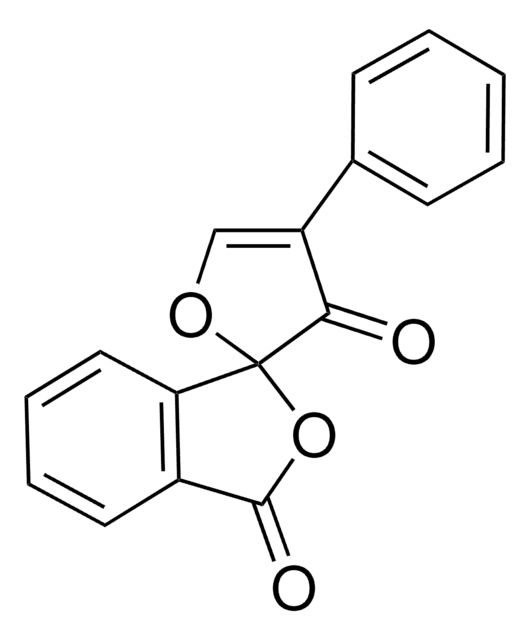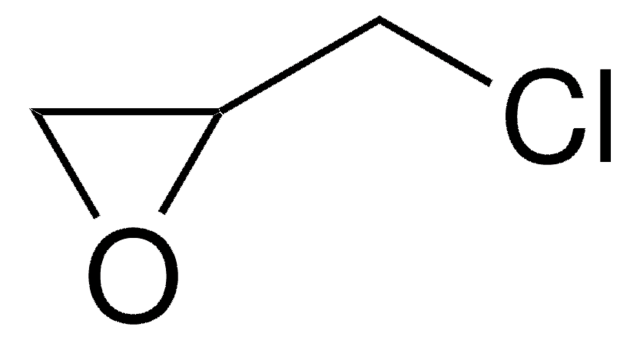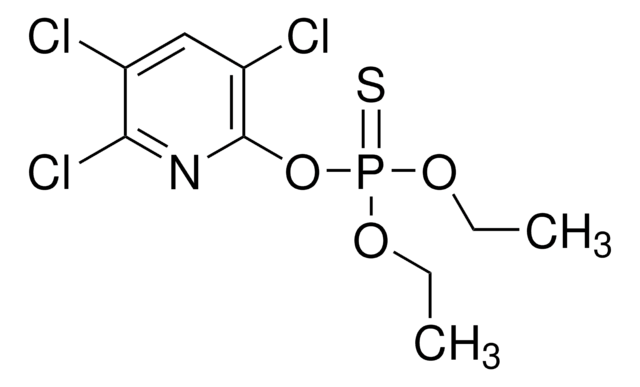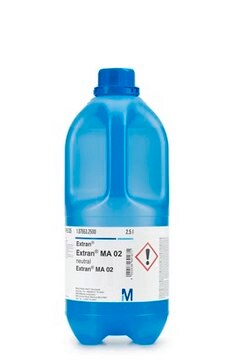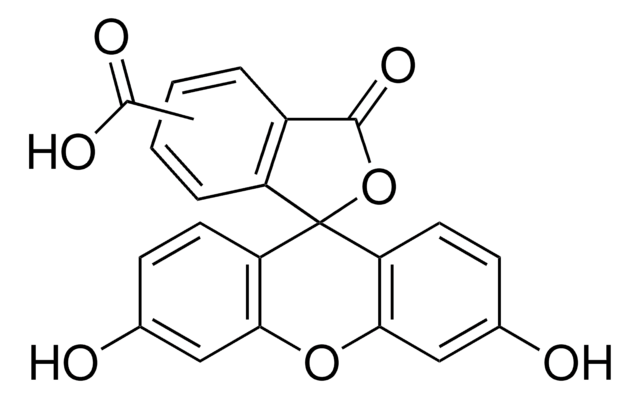Key Documents
47614
Fluram
BioReagent, suitable for fluorescence, ≥99.0% (UV)
Synonim(y):
Fluorescamine, 4-Phenylspiro-[furan-2(3H),1-phthalan]-3,3′-dione
About This Item
Polecane produkty
linia produktu
BioReagent
Próba
≥99.0% (UV)
mp
153-157 °C (lit.)
153-157 °C
rozpuszczalność
acetonitrile: soluble
ethanol: soluble
fluorescencja
λex 234 nm
λex 390 nm; λem 480 nm in 0.5 M borate pH 8.5 (after derivatization with L-leucine)
przydatność
suitable for fluorescence
ciąg SMILES
O=C1OC2(OC=C(C2=O)c3ccccc3)c4ccccc14
InChI
1S/C17H10O4/c18-15-13(11-6-2-1-3-7-11)10-20-17(15)14-9-5-4-8-12(14)16(19)21-17/h1-10H
Klucz InChI
ZFKJVJIDPQDDFY-UHFFFAOYSA-N
Szukasz podobnych produktów? Odwiedź Przewodnik dotyczący porównywania produktów
Zastosowanie
Opakowanie
Informacje prawne
Kod klasy składowania
13 - Non Combustible Solids
Klasa zagrożenia wodnego (WGK)
WGK 3
Temperatura zapłonu (°F)
Not applicable
Temperatura zapłonu (°C)
Not applicable
Środki ochrony indywidualnej
Eyeshields, Gloves, type N95 (US)
Certyfikaty analizy (CoA)
Poszukaj Certyfikaty analizy (CoA), wpisując numer partii/serii produktów. Numery serii i partii można znaleźć na etykiecie produktu po słowach „seria” lub „partia”.
Masz już ten produkt?
Dokumenty związane z niedawno zakupionymi produktami zostały zamieszczone w Bibliotece dokumentów.
Nasz zespół naukowców ma doświadczenie we wszystkich obszarach badań, w tym w naukach przyrodniczych, materiałoznawstwie, syntezie chemicznej, chromatografii, analityce i wielu innych dziedzinach.
Skontaktuj się z zespołem ds. pomocy technicznej